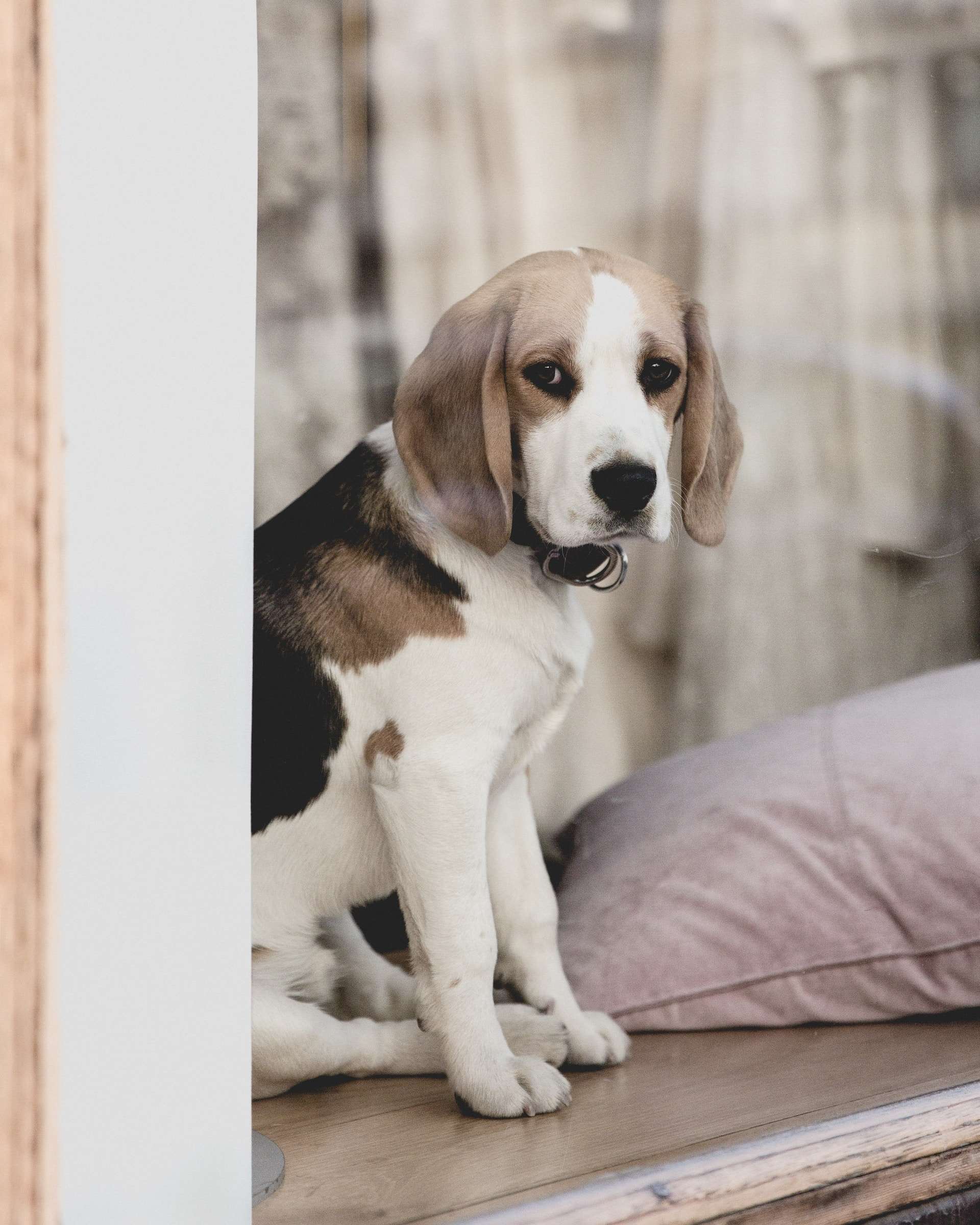Why Does My Dog Bury His Head into Me? Top 10 Surprising Reasons!
Welcome to BarkLikeMeow, where we celebrate the wonderful world of dogs and their endearing behaviors. Today, we embark on a journey to uncover the mystery behind a delightful and heartwarming canine habit: why does your furry friend bury their head into you? It’s a question that’s crossed the minds of many dog owners, and we’re here to delve deep into the fascinating reasons behind this adorable gesture.
Picture this: you’re relaxing on the couch, and your faithful companion, with an air of affection, snuggles up and nuzzles their head into your lap or chest. You might have wondered, “Is it love? Is it comfort? Or is there something more to it?” Fear not, dear dog lover, for we’re about to unveil the secrets behind this behavior.
The Natural Instincts of Dogs
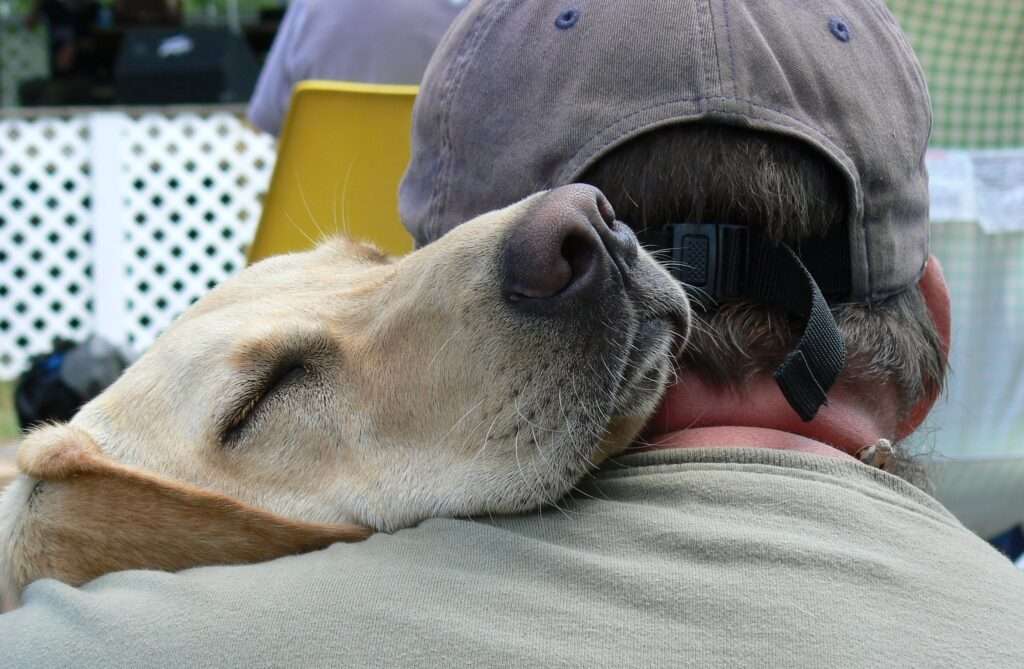
To truly understand why our four-legged friends bury their heads into us, we must take a step back and explore their ancestral roots. Dogs, those lovable creatures that share our homes and hearts, have a rich history that dates back to their wild ancestors.
In the wild, canines often needed to seek shelter, safety, and warmth within their packs. These instincts were crucial for survival, and over generations, they’ve been passed down to our domesticated dogs. Your furry companion may no longer roam the wilderness, but deep within, those ancestral instincts still linger, driving many of their behaviors, including the charming head-burying habit.
The Psychology Behind Burrowing
In the world of dogs, behavior often speaks volumes about their emotional world. When your dog buries their head into you, it’s more than just a physical act—it’s a window into their psychology. To comprehend this enchanting behavior, we must delve into the intricate emotions that drive our furry friends.
Canines are social creatures at heart, and their emotional well-being is closely tied to the bonds they form with their human family. Burying their head into your lap or chest is their way of seeking a deeper connection, a display of trust and affection. It’s a testament to the profound attachment they share with you.
Moreover, this behavior is a reflection of their need for comfort and security. In a world filled with unknowns, your presence offers a sense of safety, much like the warmth of a cozy den in the wild. By burying their head, they’re telling you that they trust you to protect them.
Forms of Head Burying
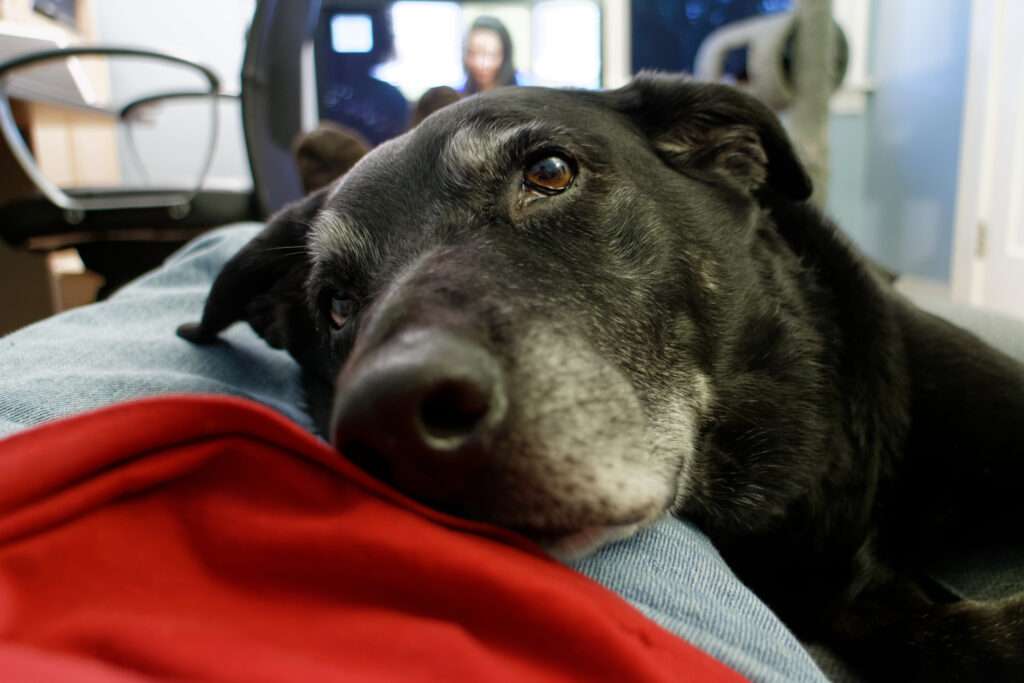
Now that we’ve peered into the psychology behind this heartwarming act, let’s explore the various ways our furry companions express their love and seek comfort through head burying. They have an array of endearing methods, each with its unique charm.
- Lap Love: One of the most common forms of head burying is when your dog nestles their head into your lap. This intimate gesture is a clear declaration of affection and trust. The soft touch of their fur against your skin and the warmth of their body create a bond that words can’t quite capture.
- Blanket Buddies: Have you ever noticed your dog snuggling their head under a blanket or pillow? It’s another adorable way they seek comfort and security. It’s as if they’re creating their den right there with you, reinforcing the idea that you are their safe haven.
- Pillow Pals: Some dogs are known to rest their heads on your pillow, sharing the space where you sleep. This behavior highlights their desire to be close to you, even when you’re resting. It’s like having a furry guardian angel watching over your dreams.
Understanding the significance of these forms of head burying is the key to strengthening your bond with your beloved pet. Each gesture holds a special message, and decoding it can deepen your connection and make your relationship even more extraordinary. So, stay tuned as we unravel more layers of this delightful canine habit.
Love and Affection
In the world of dogs, love is expressed in countless ways, and one of the most heartwarming displays is when your furry friend buries their head into you. This tender act is a testament to the deep bond and affection they feel for you.
When your dog nuzzles their head into your lap or chest, it’s like they’re whispering, “You mean the world to me.” This physical closeness not only brings them comfort but also reinforces the emotional connection you share. It’s a gesture of trust and vulnerability, showing that they feel safe and loved in your presence.
The next time your loyal companion nestles their head against you, remember that it’s their way of saying, “I adore you.” Cherish these moments of pure, unspoken love, for they are a reminder of the extraordinary bond you share with your furry family member.
Seeking Comfort and Safety
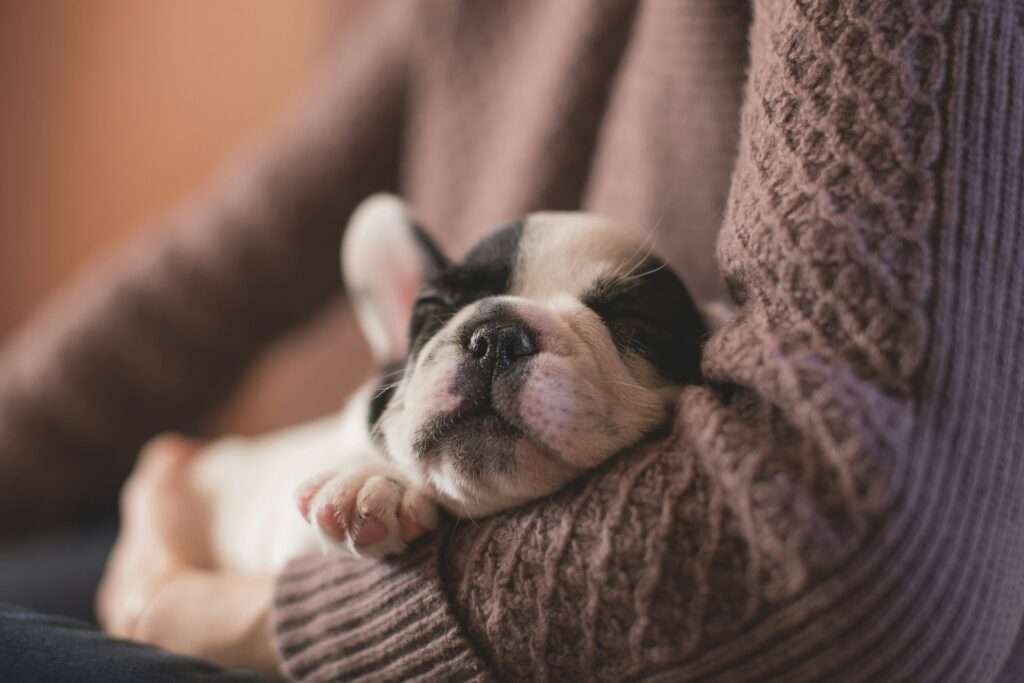
As social animals, dogs have an innate need for security and comfort. They rely on their pack for protection, and in your home, you are their chosen pack. When your dog buries their head into you, they are seeking the comfort and safety that you provide.
Imagine yourself as the cozy den in the wild, a place where they can find respite from the world’s uncertainties. By burying their head, they are conveying their trust in you as their protector. It’s a beautiful acknowledgment of the safe haven you’ve created for them.
In addition to comfort, head burying can also be a response to stressful situations. Dogs may seek solace in your presence when they’re feeling anxious or uncertain. Understanding this behavior can help you support your pet during challenging times and provide the reassurance they need.
Communication through Body Language
Dogs are masters of non-verbal communication, and their body language is a powerful tool for expressing their feelings. When your furry friend buries their head into you, they are engaging in a unique form of canine communication.
In the canine world, head burying can serve as a gesture of submission, showing deference and respect to their human pack members. It’s their way of saying, “I trust you, and I accept your leadership.” This form of body language fosters a deeper connection and understanding between you and your four-legged companion.
Moreover, head burying can also be a sign of empathy and empathy in dogs. They can sense your emotions and may seek to comfort you when you’re feeling down or stressed. It’s a testament to the incredible emotional intelligence of our canine companions.
So, the next time your dog buries their head into you, pay attention to the context and their overall body language. It might just be their way of saying, “I’m here for you,” in their own special way.
Emotional Health and Stress
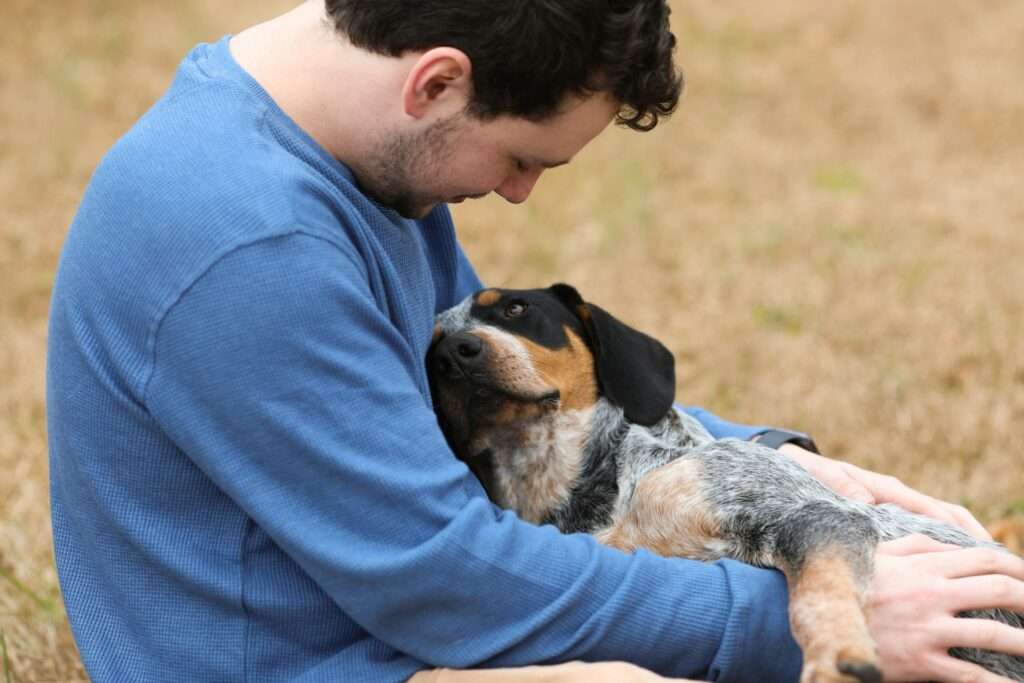
While head burying is often a heartwarming display of affection and trust, it’s essential to be aware that it can also be an indicator of emotional distress or stress in your furry friend. Dogs, like us, can experience a range of emotions, and they may turn to this behavior when they’re feeling overwhelmed.
If your dog’s head burying seems excessive or out of character, it’s crucial to consider their emotional well-being. Stressors such as loud noises, changes in routine, or new environments can trigger this response. By recognizing the signs of stress and addressing the underlying causes, you can help your pet feel more at ease.
As responsible pet owners, it’s our duty to provide a safe and nurturing environment for our dogs. If you suspect that your furry companion is struggling with stress, consult with a veterinarian or a professional dog trainer. They can provide guidance on how to alleviate stress and ensure your dog’s emotional health is in tip-top shape.
Playful Behavior
Our canine companions are known for their playful spirits and boundless energy. When it comes to head burying, sometimes it’s not all about affection or comfort—it’s about playfulness. Dogs have a knack for turning even the simplest actions into a playful game.
Picture this scenario: your dog buries their head into your lap, and suddenly, it turns into a delightful game of hide and seek. They might pop their head out and give you a mischievous look before diving back in, tail wagging in anticipation. It’s their way of inviting you to join in the fun.
Playful head burying is a reminder of the joy and exuberance our furry friends bring into our lives. Embrace these moments of laughter and connection, for they are a testament to the pure and unbridled happiness that dogs share with us.
Breed and Individual Variations
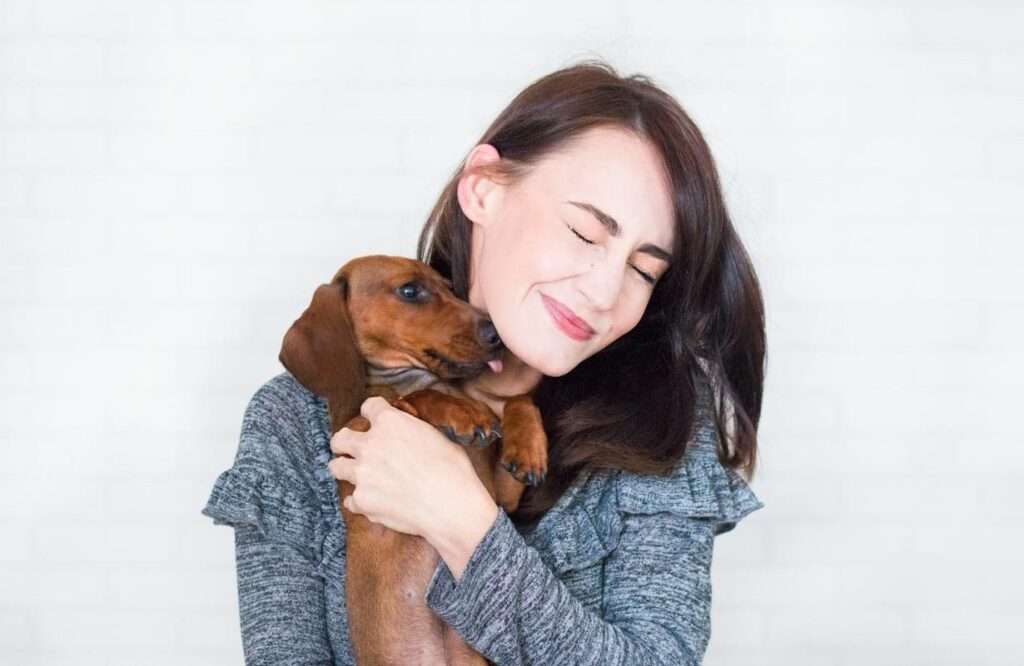
Dogs come in a glorious array of breeds, each with its unique characteristics and quirks. When it comes to head burying, breed and individual personality play a significant role in how this behavior is expressed.
Some breeds are more prone to head burying than others. For example, certain small breeds, like Dachshunds, are notorious for burrowing into blankets and pillows due to their natural instinct to dig. On the other hand, larger breeds might express this behavior differently, such as resting their head gently on your lap.
Individual variations are just as important to consider. Just as no two humans are alike, no two dogs are exactly the same. Your dog’s temperament, past experiences, and personal preferences will influence how and when they choose to bury their head into you.
Understanding these breed and individual differences is key to building a stronger bond with your pet. By recognizing their unique needs and tendencies, you can tailor your interactions to make them feel loved and cherished in their own special way.
Health-Related Concerns
As responsible pet owners, it’s crucial to be vigilant about our furry companions’ health and well-being. While head burying is often an endearing behavior, there are instances when it might raise concerns about your dog’s health.
If your dog suddenly starts burying their head excessively or if they seem distressed while doing so, it’s essential to consider potential medical reasons. Ear infections, dental issues, allergies, or skin irritations could be causing discomfort, leading to this behavior.
To rule out any underlying health concerns, consult with your veterinarian. They can conduct a thorough examination, offer a diagnosis, and provide appropriate treatment if needed. Remember, addressing health-related issues promptly is a crucial part of ensuring your pet’s overall happiness and quality of life.
Training and Modification
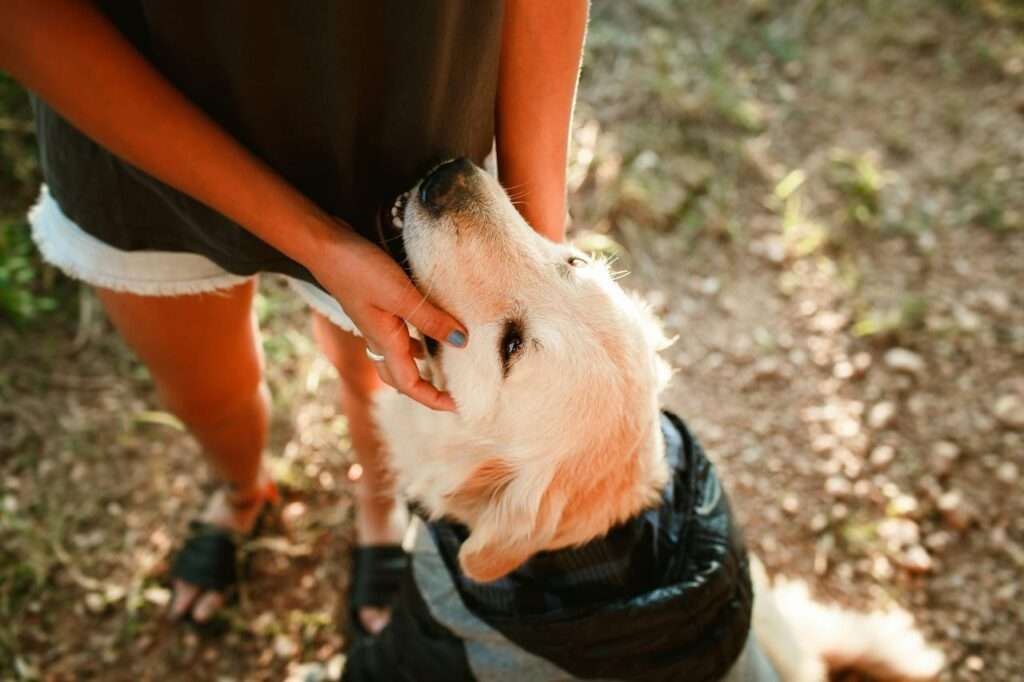
Can the charming behavior of head burying be trained or modified? The answer is yes, to a certain extent. While it’s important to respect your dog’s natural instincts and communication, there are situations where gentle training and modification can be beneficial.
For example, if your dog’s head burying is accompanied by excessive digging, you may want to redirect their behavior to a designated digging area. Positive reinforcement techniques, such as offering treats and praise when they use the designated area, can be highly effective.
Additionally, if your dog’s head burying becomes problematic in certain situations, such as during grooming or veterinary visits, working with a professional dog trainer or behaviorist can be a valuable step. They can provide guidance on desensitization and counterconditioning to help your dog feel more comfortable in these scenarios.
Remember, the key to successful training and modification is patience, consistency, and kindness. Your goal is to create a positive and trusting relationship with your furry friend, ensuring their comfort and happiness.
Stories from Real Dog Owners
Every dog owner has a unique story to tell about their beloved furry companion, and head burying is a behavior that often weaves its way into these heartwarming tales. We reached out to real dog owners to share their experiences with this endearing gesture.
Sarah from California: “My rescue dog, Max, used to bury his head in my lap whenever he was anxious. Over time, as he gained trust and security, he stopped doing it. It was like watching him grow emotionally, and now he only does it when he’s feeling extra affectionate.”
David from New York: “Our Golden Retriever, Luna, buries her head under our pillows when she knows we’re getting ready for bedtime. It’s her way of joining in on the family snuggle time. We wouldn’t have it any other way.”
These stories highlight the beautiful journey that dogs and their owners share. Whether it’s a sign of trust, affection, or simply a playful act, head burying is a testament to the unique bond that exists between humans and their furry friends.
Conclusion
As we come to the end of our comprehensive guide on why dogs bury their heads into us, we’re left with a profound appreciation for the intricate world of canine behavior. What may have seemed like a simple act at first glance is, in reality, a multifaceted expression of love, trust, and communication.
Dogs, our loyal companions, engage in head burying for a myriad of reasons. It’s their way of seeking love, comfort, and security. It’s a form of communication that transcends words and fosters a deeper connection between dogs and their human families.
We’ve explored the psychology behind this endearing behavior, its role in body language and emotional health, and even the playful side of our canine companions. We’ve discussed how breed and individual variations influence this gesture and why health-related concerns should always be considered.
Additionally, we’ve delved into the possibility of training and modification when necessary, emphasizing the importance of patience and positive reinforcement. As you continue on your journey with your furry friend, remember to cherish these moments when your dog buries their head into you. It’s a reminder of the unique connection you share and the love that fills your home.
Frequently Asked Questions
Why does my dog bury his head into me when I’m sad or upset?
Dogs are incredibly empathetic creatures. When they sense your sadness, they may bury their heads into you as a way to provide comfort and show their support. It’s their way of saying, “I’m here for you.”
Is head burying a sign of submission or dominance?
In the context of human-dog relationships, head burying is typically a sign of submission and affection. It’s your dog’s way of showing respect and trust towards you, their pack leader.
How can I tell if my dog’s head burying is due to stress or discomfort?
Pay attention to your dog’s overall body language. If they display signs of stress such as trembling, excessive panting, or avoidance behavior while burying their head, it’s a signal that they might be feeling uneasy. Consult with a veterinarian or professional dog trainer if you suspect stress-related issues.
Can I train my dog not to bury their head when I don’t want them to?
While it’s possible to modify certain behaviors, it’s important to approach training with patience and kindness. Redirecting their behavior and offering positive reinforcement when they exhibit the desired conduct can be helpful. Consult with a professional dog trainer for guidance if needed.
Are there specific breeds that are more prone to head burying?
Some smaller breeds, like Dachshunds, Terriers, and Chihuahuas, have a natural instinct to burrow, which may lead to more head burying behaviors. However, individual personality and past experiences also play a significant role.
Should I be concerned if my dog buries their head too often?
Frequent head burying, especially if it’s a new or sudden behavior, can be a sign of discomfort or health issues. It’s advisable to consult with a veterinarian to rule out any underlying medical conditions if you’re concerned about the frequency of this behavior.
Is it safe to allow my dog to bury their head under blankets or pillows?
Allowing your dog to bury their head under blankets or pillows can be safe as long as it doesn’t lead to overheating or suffocation. Ensure that there’s enough airflow, and monitor your dog to make sure they’re comfortable and not distressed.
Can head burying be a sign of pain or discomfort in dogs?
Yes, in some cases, head burying can be an indicator of pain or discomfort, especially if it’s accompanied by other signs like whining, limping, or avoiding certain body parts. If you suspect your dog is in pain, consult with a veterinarian promptly.
What should I do if my dog starts head burying during thunderstorms or fireworks?
Dogs often seek comfort when they’re frightened by loud noises. If your dog buries their head during thunderstorms or fireworks, create a safe and quiet space for them indoors. Consider using white noise or calming music to help ease their anxiety. Consult with your veterinarian for long-term solutions if your dog has severe anxiety.
Can puppies exhibit head burying behavior, or is it more common in adult dogs?
Puppies can also exhibit head burying behavior, but the reasons behind it may differ from those of adult dogs. Puppies often bury their heads into their mother or littermates for warmth and comfort. As they grow and form bonds with their human family, this behavior may evolve into a sign of affection and trust.


